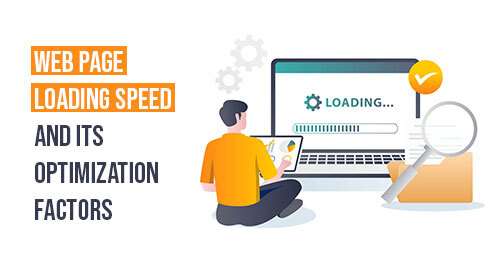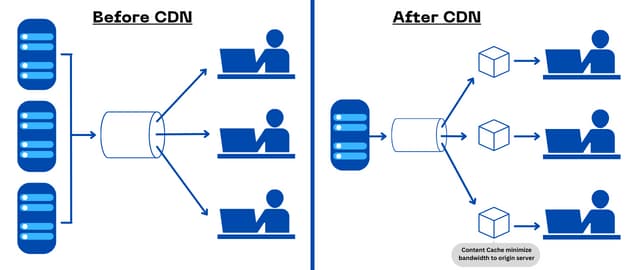
What Is Page Load Speed and How Can You Improve Your Page Load Speed
The digital medium is increasingly being the primary source of leads for businesses. The website visitors, too, do not have much patience and are expected to leave the site if it does not load fast. And where do they go? They move to the competition and make their purchases there. Web admins must ensure that the website loads within the requisite time to prevent visitors from abandoning the site.
Fast websites also have a higher preference during a keyword search. Businesses must ensure the websites load within the optimal time. But what are the factors that can impact website loading speeds? We will learn more about them in this article.
Search Engines Prefer Fast Loading Websites
Search engines want to make the internet a better place for users. Hence, they look forward to ensuring the users have a better experience when surfing for the required information. Google had announced in 2009 its plans for faster internet. The following year they announced that they included website speed as a critical factor for ranking websites. There was a preference for websites that load faster, and they received brownie points during a keyword search. Later, Google also moved forward to adapt to the increasing number of mobile users. They included Accelerated Mobile Pages and expected web pages to load fast on handheld devices.
Factors that can Affect the Website Loading Speed
Assessing the web host
You may have your website optimised to load faster, but choosing the proper web host is essential. There must be adequate resources in the hosting plan to help the website load more quickly. Remember that a website that takes more than three seconds to load experiences a drastic increase in bounce rates.
It may seem the right choice to opt for an economical hosting plan, but it may compromise loading speeds. It is acceptable for a small website or a blog to choose a shared hosting plan. However, e-commerce websites and renowned companies with locations across multiple geographies must pick a dedicated server plan. They can also select a virtual private server. The hosting plan must have an uptime of at least 99.5%.
Check the plugins
One of the critical aspects of web page loading speed is the number of plugins the website has. It is among the essential website performance factors. However, while plugins can help you quickly add numerous features to the website, they can also weaken your SEO by loading the website slowly. Therefore, the web admins must optimize and check the number of plugins used.
The plugins perform various functions, but the ones that make database calls can slow down the website. If too many such plugins make server requests, it can negatively affect user experience. You can quickly check files that the plugins are loading. First, load the website on Chrome, and click on the Inspect tab. Next, click on the Network tab and reload the website. Finally, you can check the loading of the web files.
Optimising the Website Further
The images on the website are of different sizes and can adversely influence the web page loading speeds. Some websites can have pictures that have a size over 1 MB. These large files can slow the website and increase the bounce rate. Optimise the images without compromising the image quality. There are specific plugins that can help you attain this objective.
You must minify the JavaScript and CSS files. It will help remove the comments, characters, etc., that are unnecessary for the website. In addition, using smaller functions names and variables can help to streamline the code. If the code size is smaller, the page loading procedure is more efficient.
Also, streamline the HTML on the website. It can increase the data volume transferred to the website visitors. The JavaScript performance can get affected too. While improving internet speeds can reduce page load speeds, you must keep the code volume minimal to ensure the web pages load faster.
Using a Content Delivery Network
A Content Delivery Network (CDN) is a network of servers in various parts of the world. It can provide content to the users near them when requested. The website is stored in its servers and allows visitors to access it faster. The bandwidth used is lesser too, and the access request does not hit the server origin as the CDN provides the content to the visitors.
It can help handle sudden traffic spikes and provide less load on your primary servers. Your website can scale up quickly and allows repeated crawling by the search engines. Indexing is fast and more users can now access your web content. It also provides additional security and prevents hackers from attacking your servers. A successful attack can make your site go down for a long time, and you will lose visitors.

The Traffic Volume can Affect Page Load Speeds
Many websites can withstand only a maximum traffic volume. Web admins have it tuned to a pre-set bandwidth, i.e., it can quickly address a set amount of data within the period. If you don't have systems to handle traffic volume spikes, the web pages will load slower. Over time, you will start losing visitors again.
Browser caching is a unique way to help you optimize page load time to overcome high traffic volumes. Check how long you can store the content locally before requesting an updated version. You can also compress the web content and optimize the website for high traffic. Activate the Gzip compression by default. It can help ensure that compacting the related data packages for easier delivery.
Doing house cleaning activities
The website database can get filled with new information that the website does not need. You can identify such data and remove them from the database. The hosting server can fetch the required information efficiently. The media library has heavy images and files not needed anymore. You can remove the unnecessary media files and help the website load faster.
Also, you must check if there are any render-blocking JavaScript files. They can take time to load and block the primary content on the page from being rendered. When the website uses up the resources on the device, it can delay the visual rendering of the web page. You can remove unnecessary or unused scripts. Finally, you must also avoid URL redirects, among the main website performance factors. While some like the 301 redirects can help SEO, redirects can slow down the web page speed. It takes sufficient time to move from one file to another.
Use Website Speed Testing Software to Optimise Speeds
You must test the website loading speeds periodically. Different website admins use Pingdom Website Speed test software. It allows testing the website loading speeds from servers at seven locations globally. In addition, the Google PageSpeed Insights software can test the speeds on a desktop and mobile separately. You can also use the Lighthouse tool for auditing website performance. GTMetrix is another option for you.
Conclusion
We prefer to visit the websites of our favourite brands when searching for information online. However, many of us like to move on if the website takes time to load. Businesses must consider the factors that affect site loading speeds and address them. Optimal strategies must be in place to optimise the website. A checklist of the activities and their priorities are essential.
Website admins must have a clear vision of optimising the website design. Having only the key functionalities can make the site lighter. This article discussed various common website design mistakes and optimisation strategies. If you have problems ensuring your website is loading on time, you can contact us. Our experts will be willing to help you.





